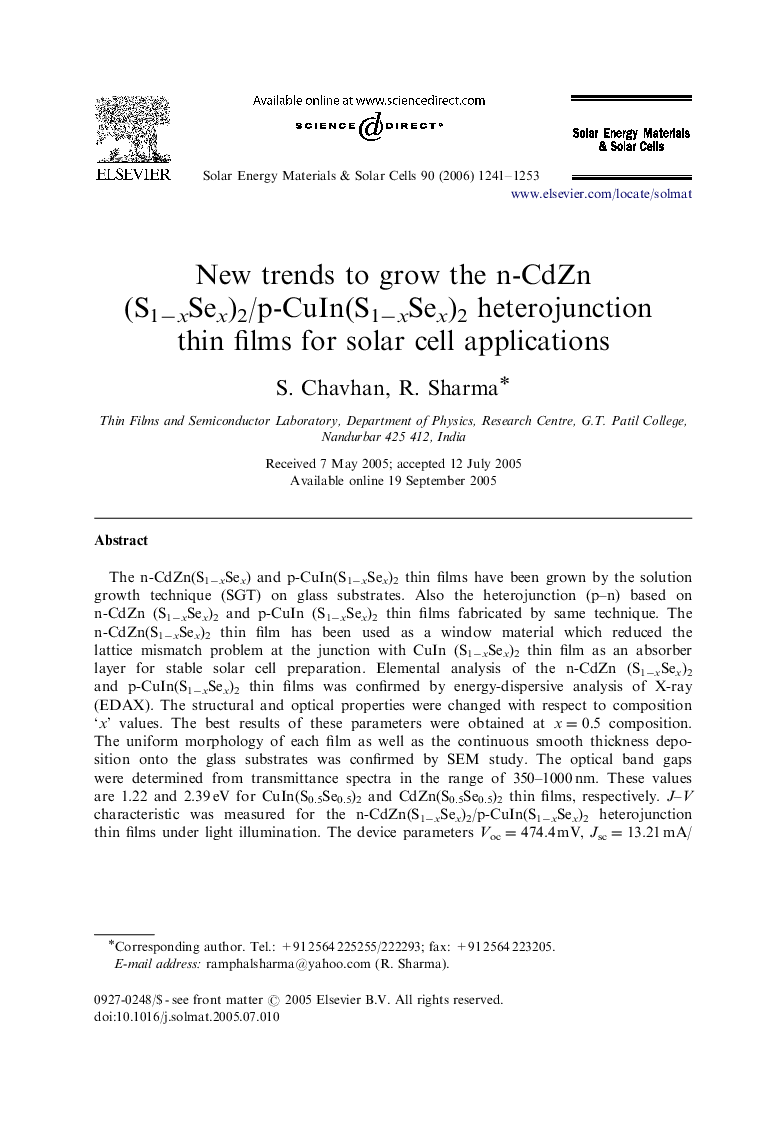| Article ID | Journal | Published Year | Pages | File Type |
|---|---|---|---|---|
| 81077 | Solar Energy Materials and Solar Cells | 2006 | 13 Pages |
The n-CdZn(S1−xSex) and p-CuIn(S1−xSex)2 thin films have been grown by the solution growth technique (SGT) on glass substrates. Also the heterojunction (p–n) based on n-CdZn (S1−xSex)2 and p-CuIn (S1−xSex)2 thin films fabricated by same technique. The n-CdZn(S1−xSex)2 thin film has been used as a window material which reduced the lattice mismatch problem at the junction with CuIn (S1−xSex)2 thin film as an absorber layer for stable solar cell preparation. Elemental analysis of the n-CdZn (S1−xSex)2 and p-CuIn(S1−xSex)2 thin films was confirmed by energy-dispersive analysis of X-ray (EDAX). The structural and optical properties were changed with respect to composition ‘x ’ values. The best results of these parameters were obtained at x=0.5x=0.5 composition. The uniform morphology of each film as well as the continuous smooth thickness deposition onto the glass substrates was confirmed by SEM study. The optical band gaps were determined from transmittance spectra in the range of 350–1000 nm. These values are 1.22 and 2.39 eV for CuIn(S0.5Se0.5)2 and CdZn(S0.5Se0.5)2 thin films, respectively. J–V characteristic was measured for the n-CdZn(S1−xSex)2/p-CuIn(S1−xSex)2 heterojunction thin films under light illumination. The device parameters Voc=474.4 mV, Jsc=13.21 mA/cm2, FF=47.8% and η=3.5% under an illumination of 85 mW/cm2 on a cell active area of 1 cm2 have been calculated for solar cell fabrication. The J–V characteristic of the device under dark condition was also studied and the ideality factor was calculated which is equal to 1.9 for n-CdZn(S0.5Se0.5)2/p-CuIn(S0.5Se0.5)2 heterojunction thin films.
